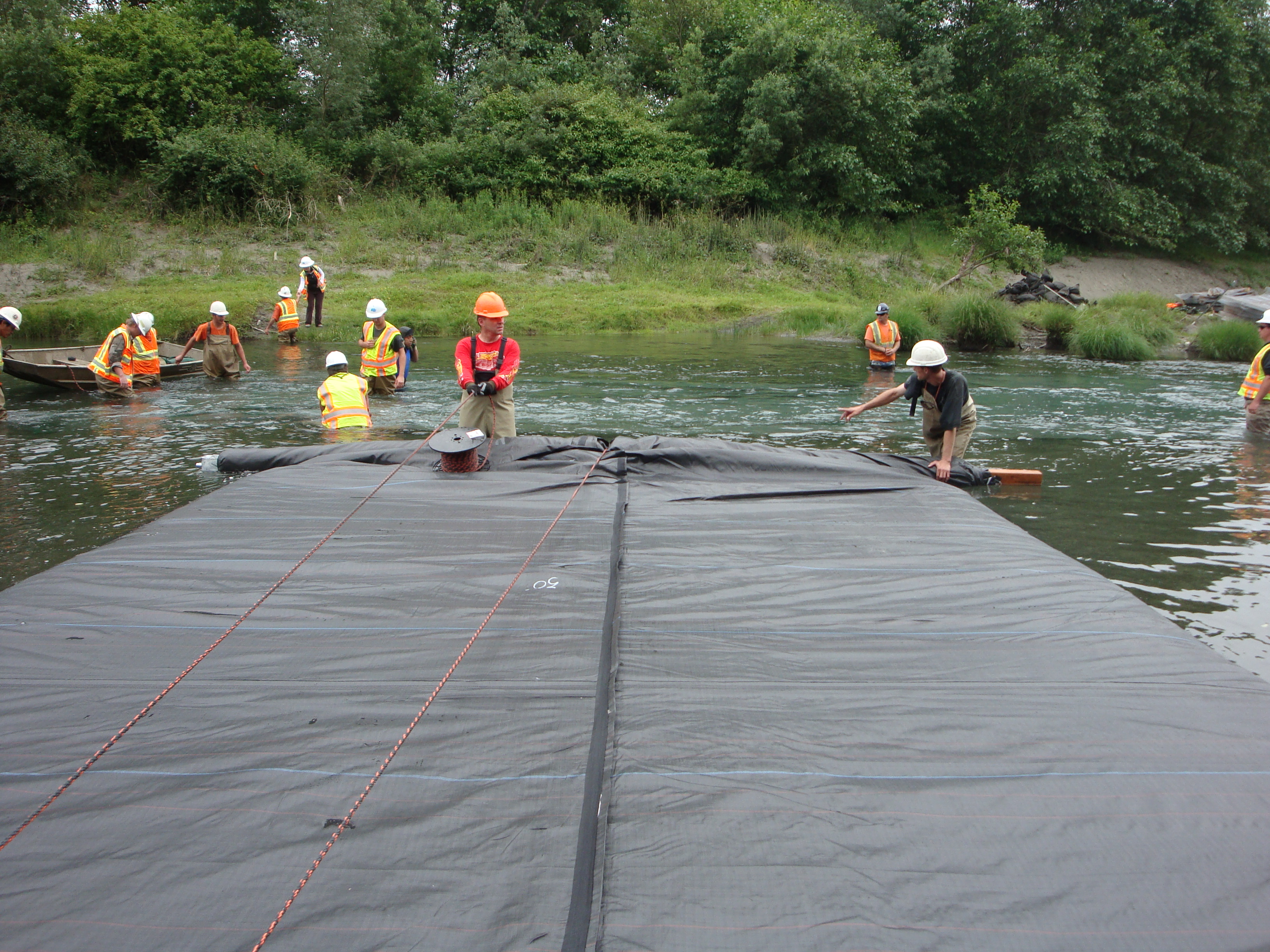
Workers maintain head (above the surrounding water) in the first 6ft tall single closed end (SCE) AquaDam as it crosses the Mad River. A worker holds a rope that is used for resistance on the AquaDam roll. The worker releases a specific length of rope and the AquaDam unrolls enough length so that the unit does not loose head above the river.
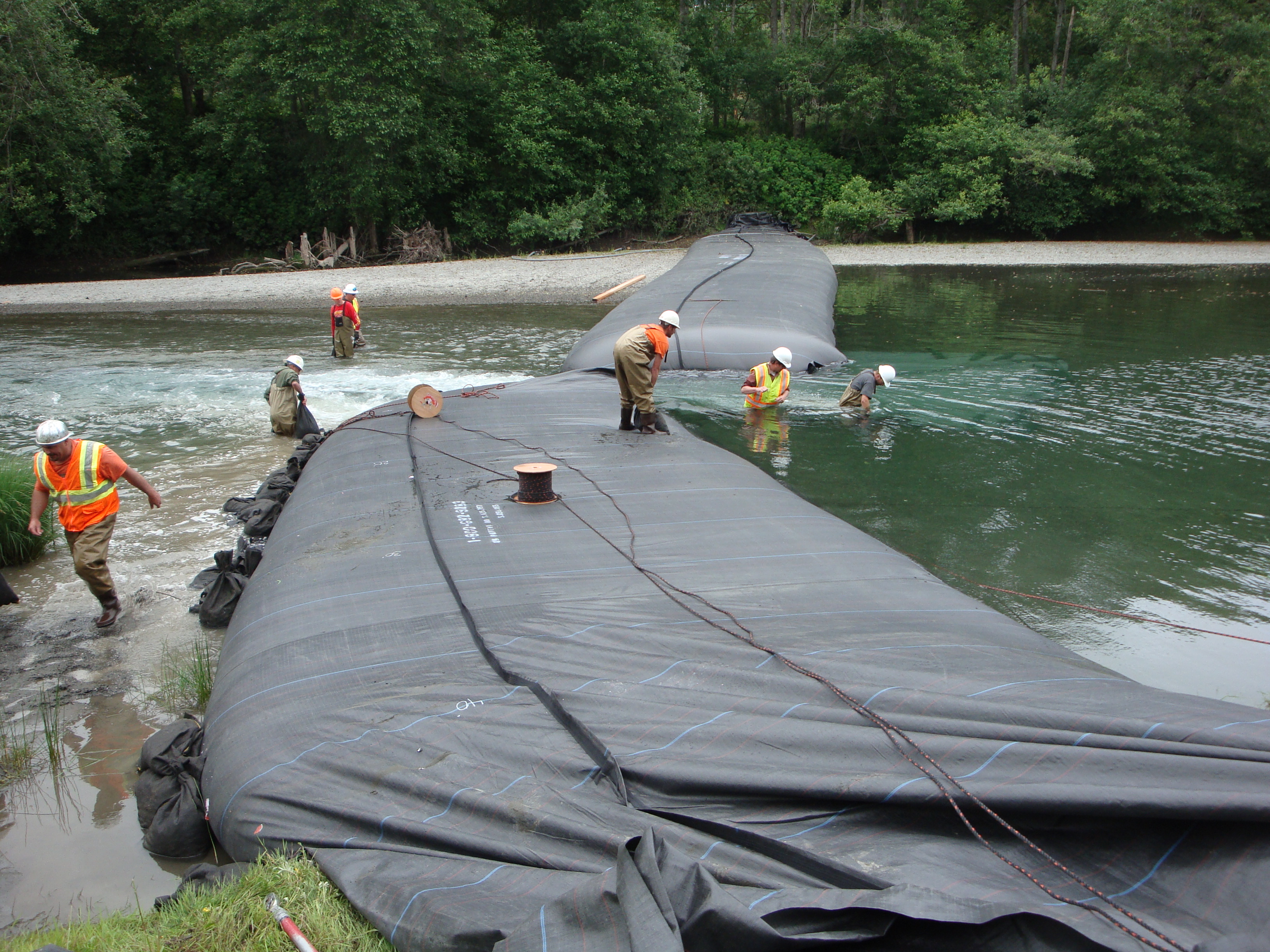
The two 6ft tall AquaDams were installed into the Mad River to create a pool upstream for fish survival during bridge construction downstream. A strip of vinyl was place between the two AquaDams to help reduce erosion from the velocity increase of the river’s flow.
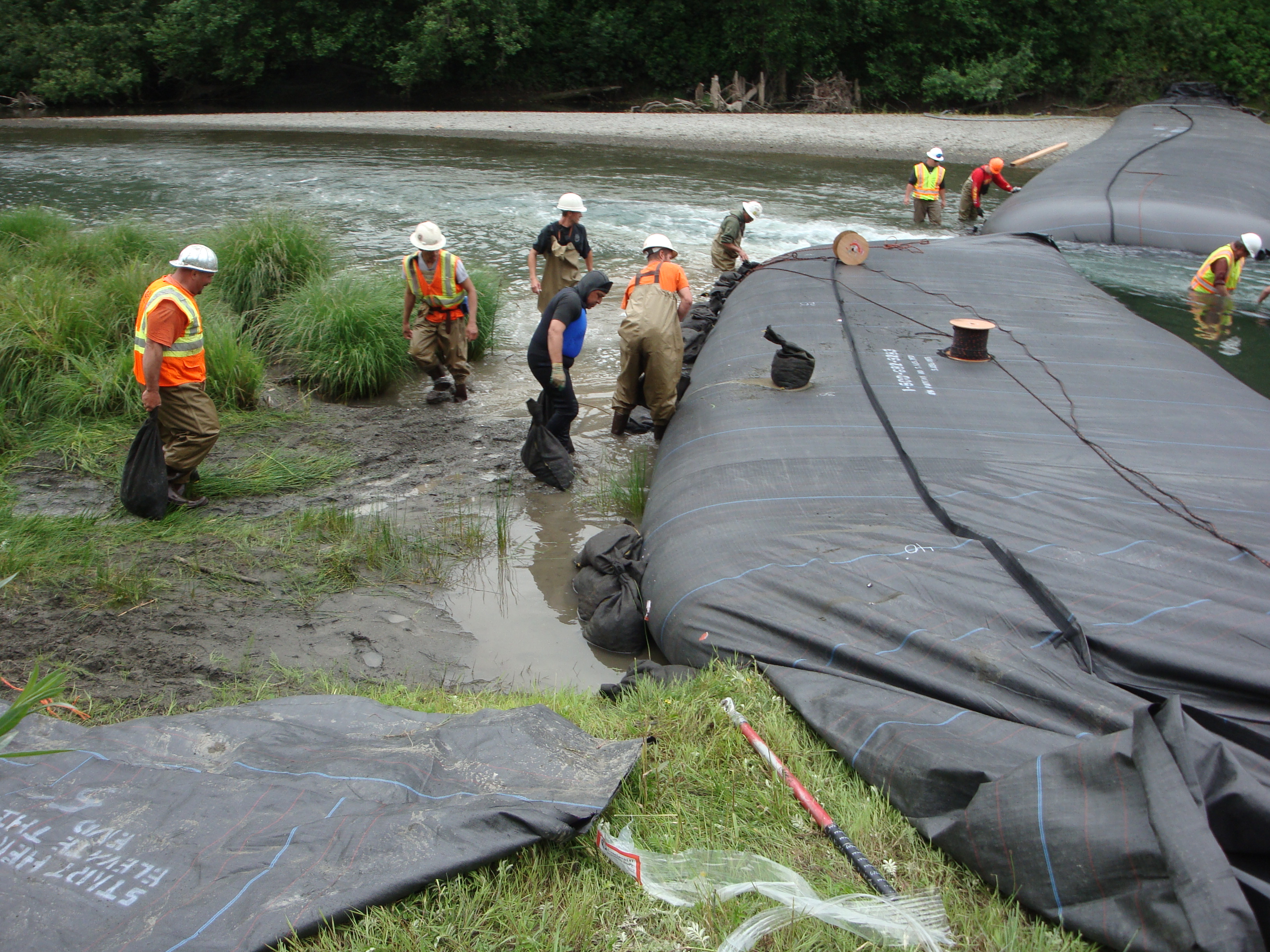
Workers place sandbags, on the downstream side, to help support the AquaDam against the current. We can see that the second AquaDam slightly rolled towards the left, during installation. It is important to note that, when the width of a river channel is reduced the velocity will increase and the upstream water will rise in height.
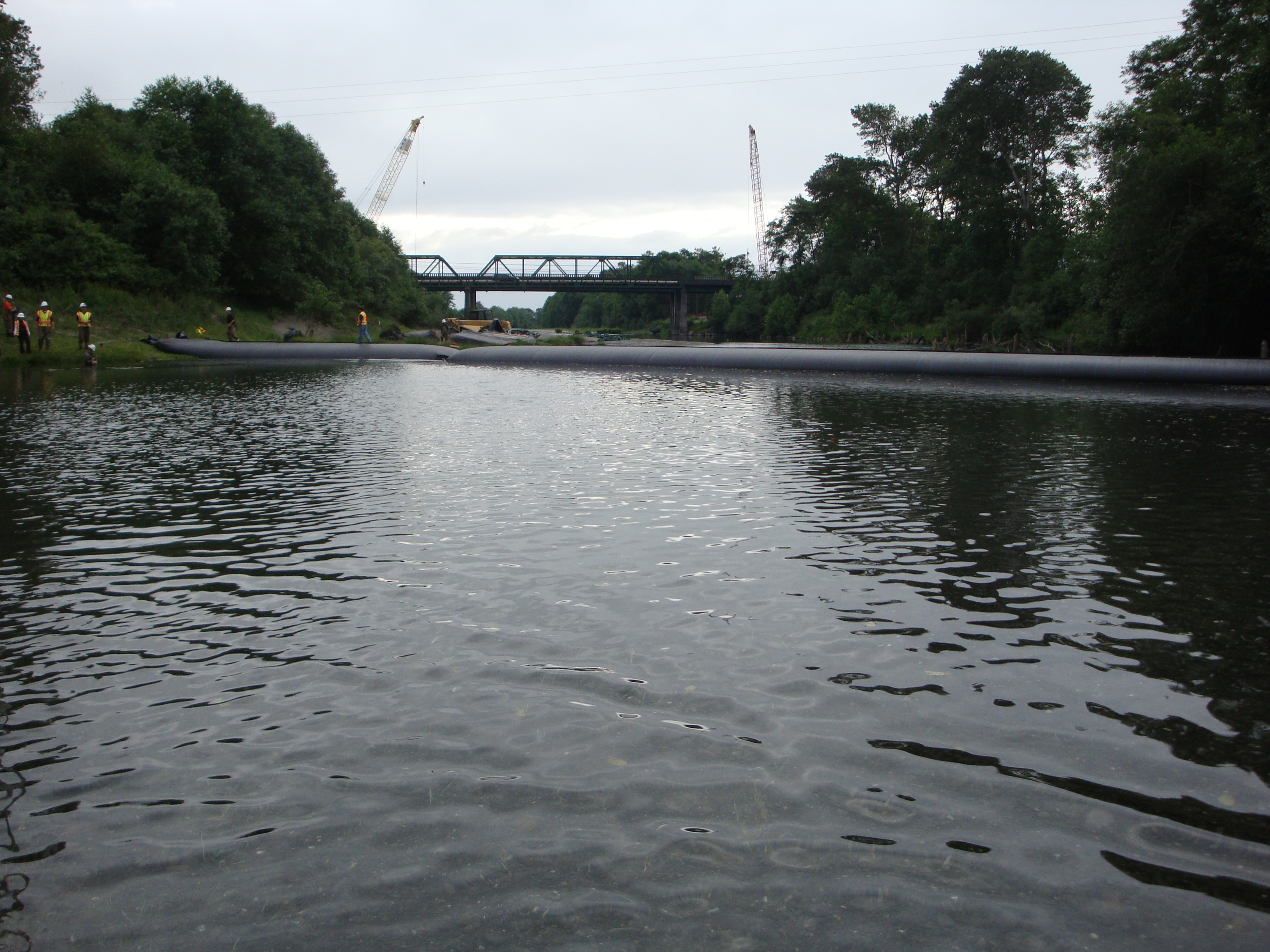
Looking downstream at the two SCE 6ft tall AquaDams in place and filled. We can see that a pool has accumulated upstream of the two AquaDams.
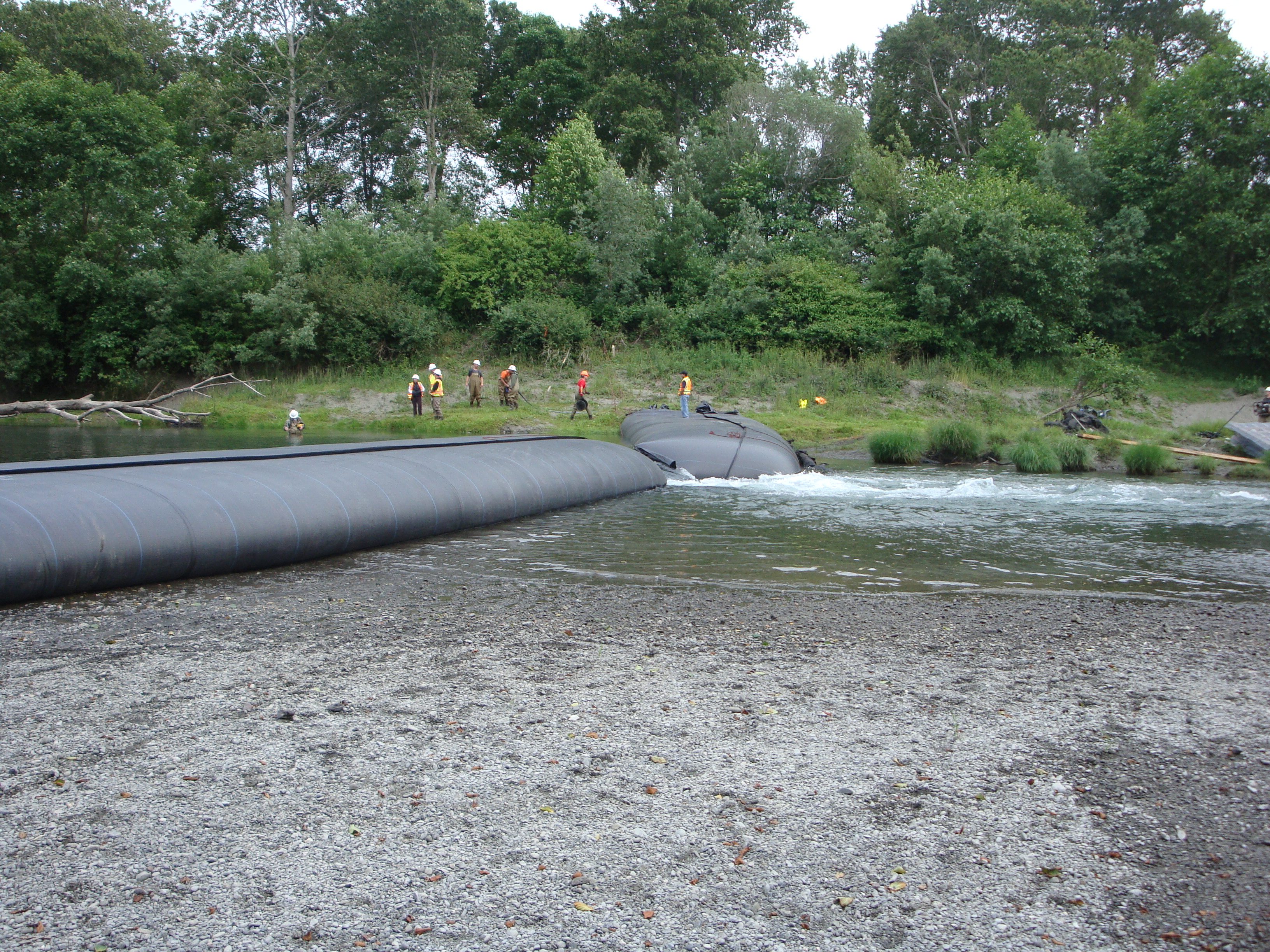
Here we are looking at the downstream end of the two AquaDams. The drop in water height from upstream to downstream of the two AquaDams has enough velocity to cause the water to white cap, downstream.
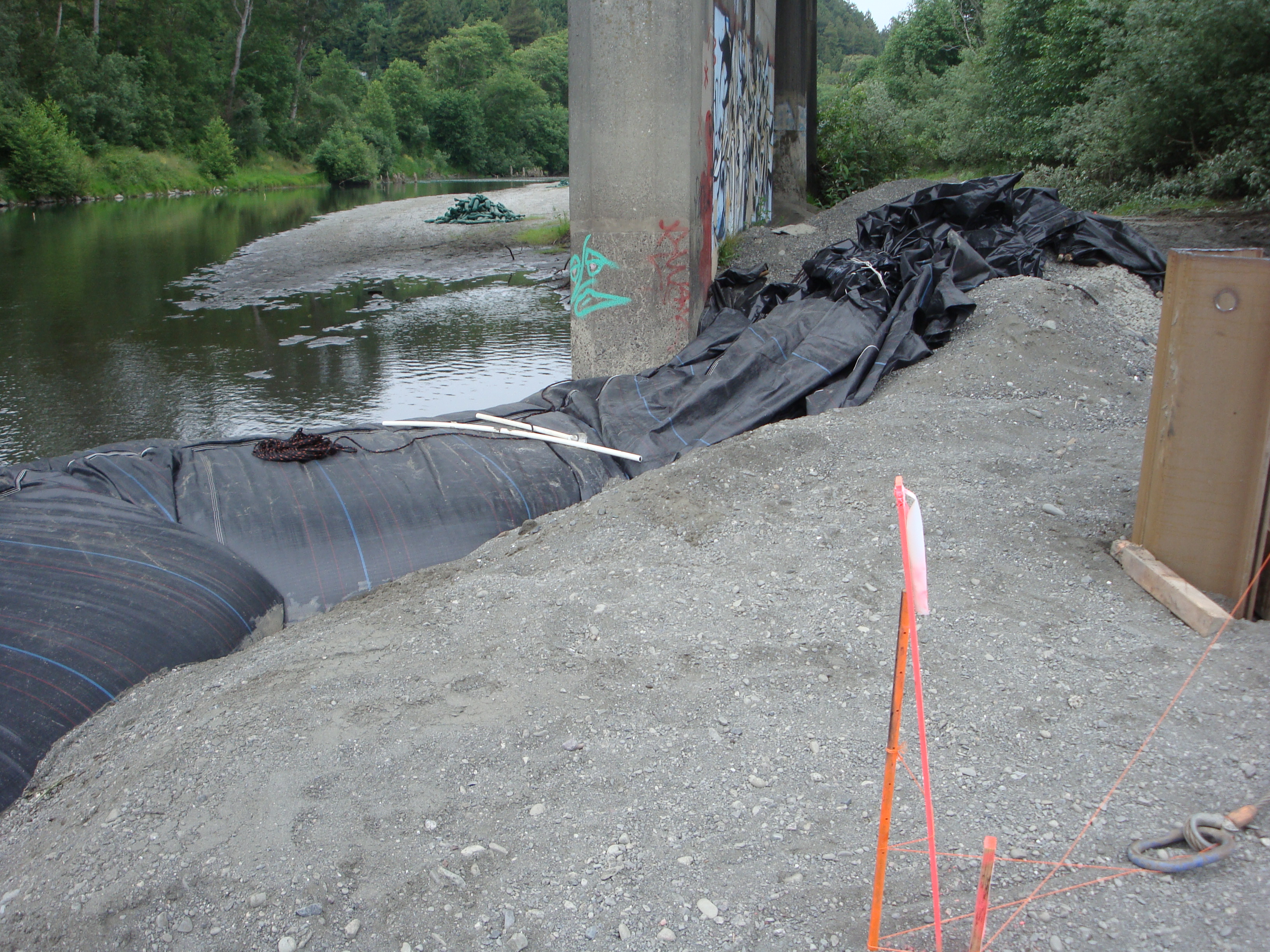
A third AquaDam was used downstream of the two 6ft tall AquaDams, this unit was 4ft tall 9ft wide (full) and 150ft long. The third AquaDam was used as a turbidity barrier that workers pushed fill material (gravel and silt) up too. The 4ft tall dam prevented the fill from migrating into the river.
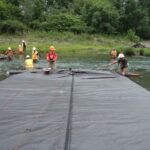
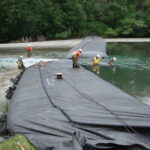
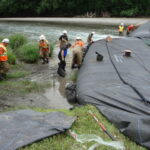
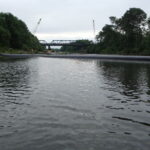
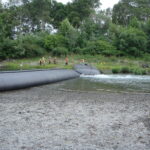
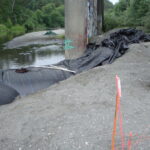
Two 6ft tall Single Closed End (SCE) AquaDams, 4ft tall by 150ft Long SCE AquaDam, Mad River, Bridge Repair, Fish Pool, Turbidity Barrier
